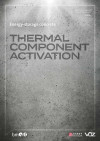Suchergebnisse für "Factsheet: Energietechnologien gestalten, die für alle sinnvoll und nutzbar sind"
F4WM - Fit4WienerMission
Preparation for the EU Urban Mission by updating goals and strategies (Smart City Wien Framework strategy, Climate-Roadmap), developing a manual for climate-neutral Viennese neighbourhoods and concepts for the participation of citizens (Climate Citizens' Council) and businesses (Climate Agreements), as well as a city-internal capacity and structural planning.
Spatial Energy Planning for Smart City Quarters and Smart Regions
In the project ERP_hoch3 energy related policy research in three Austrian agglomerations (Vienna – Lower Austria, Graz – Styria and Vorderland-Feldkirch) has been done, scenarios of the current state and the target state have been modelled and calculated. The aim was to develop generic transferable recommendations for spatial energy planning in agglomerations.
DIM4Energy - Digital Information Models for the Planning and Optimization of Buildings and Urban Energy Infrastructure
Digital information models (DIM) are playing an increasingly important role in urban planning and decision-making processes, from individual buildings (BIM) to urban information models (UIM). For the planning and optimal operation of plus-energy neighborhoods, valuable information could be obtained from these existing models, provided the appropriate data sources and associated software tools are properly linked.
Energy-storage concrete: Thermal Component Activation

This planning guide provides information on the option of solely heating and cooling small-volume residential buildings by means of thermal component activation (TCA). Concrete instructions on the planning of residential buildings with thermally-activated ceilings are also provided.
Felix Friembichler, Simon Handler, Klaus Krec, Harald Kuster
Herausgeber: BMVIT
Englisch, 122 Seiten
Downloads zur Publikation
ReHABITAT-Settlement: Sustainable rehabilitation and activation of a single-family housing estate in Mistelbach
Exploration of a sustainable single-family house redevelopment, with a holistically conceived definition of sustainability that starts with people, is based on sufficiency and also takes into account green and open spaces, social factors and mobility. The result is an integrated overall concept at the house and settlement level, and a transferable approach for other communities.
MOTIVE – Modeling, Optimizing, and technical integration of Vacuum-Glazing-Elements
This project addressed the development of construction details for the implementation of vacuum glazing panels in new windows. In this project such constructions (form of frame, thermal bridges, structural aspects, mounting of glass) were explored via empirical experiments and via simulation. As an outcome, a mock-up was constructed, and the findings were documented in a comprehensive document.
KoPro Lzk+ - Cost and process optimization in the life cycle of nearly zero energy buildings
The aim of the project was to develop a continuous process chain for the energetic-economic optimization of zero and plus energy buildings. The project focused on proven and new approaches to cost reduction of nearly zero energy buildings (nZEBs) at all stages of the life cycle. The main goal was to identify the extra-costs for nZEBs, and to promote innovative approaches taking into account the cost-effectiveness for all the Stakeholders. A database containing important cost parameters and potential savings will be developed.
